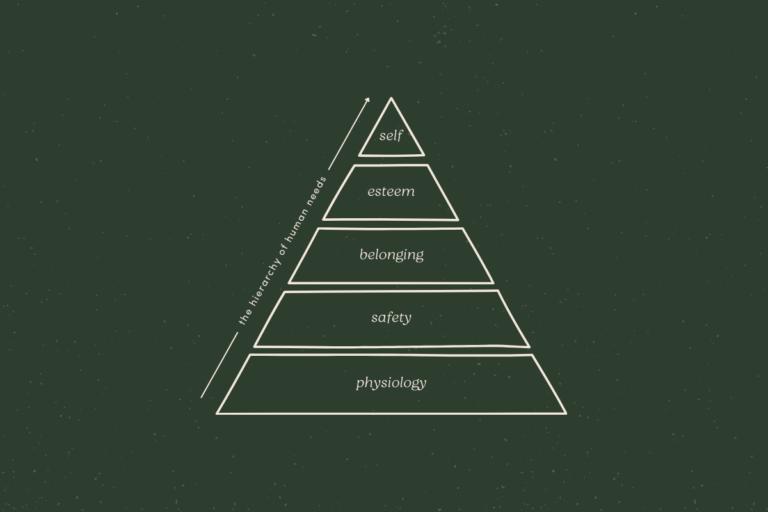
Today we’re diving into one of the most impactful strategies for managing our time effectively – time blocking. This simple tool can help you make time for the things that truly matter to you, so you can make the most of each day.
So, what on earth is time blocking?
Time blocking means equating your tasks to time. Essentially, you’re taking everything you want to do and turning it into scheduled time blocks. During those time blocks, you work solely on the task at hand. It’s quite simple, really, but it’s something a lot of us don’t do or only do selectively.
You probably have a calendar, either online or offline, that tells you when you have appointments / work / classes / etc. These are your time-bound responsibilities.
But what about the rest of the time on your calendar? If you’re not using time blocking yet, chances are those time slots are empty. You’re obviously still busy doing a bunch of things during that time, but those things aren’t scheduled. That’s where time blocking comes in.
The benefits of time blocking
It protects your time
Ever heard of Parkinson’s law? It states: “work expands so as to fill the time available for its completion”. In other words – without a clear start and finish time, a task will end up taking much longer than it needs to.
Here’s an example: Let’s say the main thing you want to get done today is a presentation for work or school. If you’re not time blocking, chances are you will spend your entire day either procrastinating or working on the presentation on and off until it’s done.
But what if you had blocked 3 hours to work on the presentation in the morning? You probably would have gotten it done then and there, with a bunch of time left over to spend on other things that are important to you.
It helps you stay focused
A lot of us go about our day using some sort of to do list, crossing off tasks as we go. But when we’re not actually equating those tasks to time in the day, we’re a lot more likely to get distracted, procrastinate or switch between tasks. It’s completely normal – life just gets in the way.
But by doing this, we never really get into a state of deep focus and flow. We also end up wasting quite a bit of time, since all that in-between time really adds up.
It promotes batching your tasks
Time batching is a strategy that goes perfectly hand in hand with time blocking. When you’re batching, you’re dedicating blocks of time to identical / similar tasks. For instance, instead of replying to emails 20 times a day, you’re scheduling blocks of time where you only answer emails.
When you’re time blocking, you’re automatically forced to think about the best way to batch your tasks. After all, you’re not going to be scheduling 5 minutes 20 times a day to check your email (I mean you could, but maybe don’t).
It prevents decision fatigue
Time blocking means you don’t have to constantly ask yourself: What am I going to do next? Studies have shown that your willpower actually diminishes with each decision you have to make in a day. This doesn’t just drain energy, it also makes it harder to make sound decisions for yourself and your wellbeing throughout the day (such as cooking a healthy meal or getting some movement in).
With time blocking you know what to do and when to do it, allowing you to preserve that precious decision-making energy.
It helps you build better habits
While many productivity gurus will talk about time blocking as a tool to get done as many things as possible, I encourage you to view it as a tool to help you do the things that matter to you.
If you care about starting your day intentionally, you could block time for your morning routine each day. If you want to take a mindful walk outside each day after work, you can schedule it in your calendar so you (and other people) know not to plan other things during that time. By turning the habits you want to build into commitments on the calendar, it becomes much easier to stick to them.
It makes you feel like you have more time
This might sound paradoxical, but the more you fill up your day with blocks of time dedicated to activities, the more time you’re going to feel that you have.
It actually makes sense – you’re much more aware of the 24 hours you have in a day, and all the things you can do in that time. You’re also not wasting as many hours with things that don’t serve you.
In other words, you’re actually achieving more, while feeling less stressed out about it.
How to get started
There are a lot of different tools you can use to implement time blocking into your everyday planning and make it work for you.
Option 1: A digital calendar
The easiest way to use time blocking is by using a digital calendar. The main advantage of this is that you can easily move tasks around, as well as schedule recurring tasks. For example, my morning and night ritual are automatically blocked off in my Google Calendar every single day. I also block time every Sunday to do my weekly reset, in which I set myself up for the week ahead. By color-coding your time blocks, you can keep things tidy and cute.
Option 2: Good ol’ pen and paper
If you prefer a more analog approach, that absolutely works too. All you really need to time block is a timeline and some tasks to fill it up with. How you do it is up to your imagination! A lot of people use time blocking in their bullet journals, which allows them to completely make it their own.
Option 3: Use a planner (with a timeline)
Some planners also lend themselves wonderfully for time blocking, such as the Self Journal or the popular Passion Planner.
A few time blocking tips to send you off…
Now that you know all about the benefits of time blocking and some of the methods you can use – here are a few tips to help you make the most of this tool:
- Take some time every day to plan your day and lay out your blocks. You can do this in the morning or in the evening, whatever works for you!
- If you’re using a digital calendar, make sure to schedule recurring events for the things that are important to you, so you block time for them consistently.
- Color code your calendar! It helps you see everything at a glance and also just makes it more fun?
- Schedule things you won’t remember to do otherwise. Back when I started at my first corporate job, I would schedule 15 minutes of ‘getting some headspace’ every afternoon, where I’d take a quick walk outside to wind down. These kind of little appointments with yourself are just as important as appointments with anyone else, so schedule them!
- Remember to be realistic. Don’t bite off more than you can chew, and leave yourself more than enough wiggle room. Time blocking is meant to help you focus on what’s important, not make you stressed out. Be gentle with yourself.






